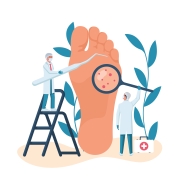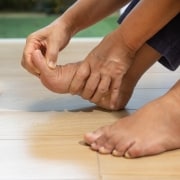What Causes Toenail Fungus?
Toenail fungus, also known as onychomycosis, is a common condition that is caused by the growth of fungi, including yeasts and molds, on the toenails. Toenail fungus can affect the nails on both the toes and the fingers, but it is more common on the toenails. If you think you may have toenail fungus in Pflugerville, TX, contact your podiatrist right away. Here are several factors that can cause toenail fungus, including:
Age
Toenail fungus is more common in older adults, as the nails become thicker and more prone to infection with age. Also, elderly adults are often not able to properly clean and maintain their feet and toes, due to limited flexibility and mobility, so the likelihood of toenail fungus increases.
Poor Hygiene
Not washing the feet at least daily, or failing to dry the feet thoroughly after swimming or bathing can increase the risk of developing toenail fungus.
Trauma
Toenails that are injured or damaged are more susceptible to fungus infections, particularly if the skin layer has been breached due to cuts or abrasions.
Sweating
Feet that sweat excessively can create a warm and moist environment that is conducive to the growth of fungi.
Constricting Footwear
Wearing shoes that are too tight or that are unusually constricting inhibits the skin’s ability to breathe, which can increase the risk of developing toenail fungus.
Moist Environments
The fungus that causes toenail fungus thrives in warm, moist environments like pools, showers and locker rooms. Walking barefoot in these places can increase the risk of toenail fungus.
Weakened Immune System
Those with compromised immune systems are more prone to all infections, including toenail fungus.
Diabetes
People who have diabetes are more prone to all kinds of foot infections, including toenail fungus.
Toenail fungus can be treated by your podiatrist in Pflugerville, TX. Early detection and treatment is key to a successful outcome. Contact us today to book your appointment.








